第63章 NATURE MYTHS(8)
Artemidorus in his Love Elegies, quoted by the Pseud-Eratosthenes.
Gill, Myths and Songs from South Pacific, pp. 135-138.
"The owl was a baker's daughter" is the fragment of Christian mythology preserved by Ophelia. The baker's daughter behaved rudely to our Lord, and was changed into the bird that looks not on the sun. The Greeks had a similar legend of feminine impiety by which they mythically explained the origin of the owl, the bat and the eagle-owl. Minyas of Orchomenos had three daughters, Leucippe, Arsippe and Alcathoe, most industrious women, who declined to join the wild mysteries of Dionysus. The god took the shape of a maiden, and tried to win them to his worship. They refused, and he assumed the form of a bull, a lion, and a leopard as easily as the chiefs of the Abipones become tigers, or as the chiefs among the African Barotse and Balonda metamorphose themselves into lions and alligators. The daughters of Minyas, in alarm, drew lots to determine which of them should sacrifice a victim to the god.
Leucippe drew the lot and offered up her own son. They then rushed to join the sacred rites of Dionysus, when Hermes transformed them into the bat, the owl and the eagle-owl, and these three hide from the light of the sun.
Livingstone, Missionary Travels, pp. 615, 642.
Nicander, quoted by Antoninus Liberalis.
A few examples of Bushman and Australian myths explanatory of the colours and habits of animals will probably suffice to establish the resemblance between savage and Hellenic legends of this character. The Bushman myth about the origin of the eland (a large antelope) is not printed in full by Dr. Bleek, but he observes that it "gives an account of the reasons for the colours of the gemsbok, hartebeest, eland, quagga and springbok". Speculative Bushmen seem to have been puzzled to account for the wildness of the eland.
It would be much more convenient if the eland were tame and could be easily captured. They explain its wildness by saying that the eland was "spoiled" before Cagn, the creator, or rather maker of most things, had quite finished it. Cagn's relations came and hunted the first eland too soon, after which all other elands grew wild. Cagn then said, "Go and hunt them and try to kill one; that is now your work, for it was you who spoilt them". The Bushmen have another myth explanatory of the white patches on the breasts of crows in their country. Some men tarried long at their hunting, and their wives sent out crows in search of their husbands. Round each crow's neck was hung a piece of fat to serve as food on the journey. Hence the crows have white patches on breast and neck.
Brief Account of Bushmen Folk-Lore, p. 7.
Cape Monthly Magazine, July, 1874.
In Australia the origins of nearly all animals appear to be explained in myths, of which a fair collection is printed in Mr.
Brough Symth's Aborigines of Victoria. Still better examples occur in Mrs. Langloh Parker's Australian Legends. Why is the crane so thin? Once he was a man named Kar-ween, the second man fashioned out of clay by Pund-jel, a singular creative being, whose chequered career is traced elsewhere in our chapter on "Savage Myths of the Origin of the World and of Man". Kar-ween and Pund-jel had a quarrel about the wives of the former, whom Pund-jel was inclined to admire. The crafty Kar-ween gave a dance (jugargiull, corobboree), at which the creator Pund-jel was disporting himself gaily (like the Great Panjandrum), when Kar-ween pinned him with a spear. Pund-jel threw another which took Kar-ween in the knee-joint, so that he could not walk, but soon pined away and became a mere skeleton. "Thereupon Pund-jel made Kar-ween a crane," and that is why the crane has such attenuated legs. The Kortume, Munkari and Waingilhe, now birds, were once men. The two latter behaved unkindly to their friend Kortume, who shot them out of his hut in a storm of rain, singing at the same time an incantation.
The three then turned into birds, and when the Kortume sings it is a token that rain may be expected.
Vol. i. p. 426 et seq.
Let us now compare with these Australian myths of the origin of certain species of birds the Greek story of the origin of frogs, as told by Menecrates and Nicander. The frogs were herdsmen metamorphosed by Leto, the mother of Apollo. But, by way of showing how closely akin are the fancies of Greeks and Australian black fellows, we shall tell the legend without the proper names, which gave it a fictitious dignity.
Antoninus Liberalis, xxxv.
THE ORIGIN OF FROGS.
"A woman bore two children, and sought for a water-spring wherein to bathe them. She found a well, but herdsmen drove her away from it that their cattle might drink. Then some wolves met her and led her to a river, of which she drank, and in its waters she bathed her children. Then she went back to the well where the herdsmen were now bathing, and she turned them all into frogs. She struck their backs and shoulders with a rough stone and drove them into the waters, and ever since that day frogs live in marshes and beside rivers."1
Events conceived to be common in real life were introduced into myths, and these myths were savage science, and were intended to account for the Origin of Species. But when once this train of imagination has been fired, it burns on both in literature and in the legends of the peasantry. Every one who writes a Christmas tale for children now employs the machinery of metamorphosis, and in European folk-lore, as Fontenelle remarked, stories persist which are precisely similar in kind to the minor myths of savages.